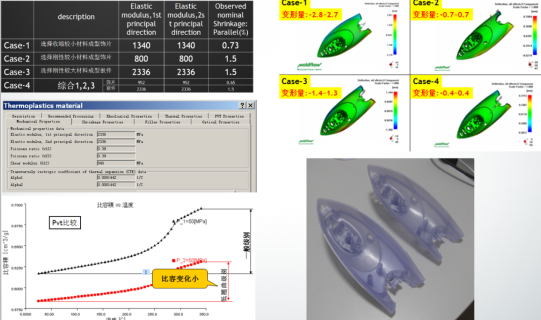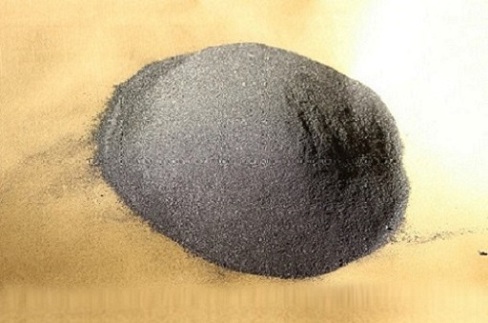Mold Flow Analysis: The Hidden Cost of Injection Molding and MoldFlow Literacy
In the near future, Autodesk conducted a round robin seminar on Moldflow's new features and development direction as well as some practical applications of Moldflowd. It communicated with AUTODESK mold flow analysis software application experts and analyzed mold flow. A deeper understanding, next to introduce the "implicit cost of injection molding industry and MoldFlow Literacy", I hope that all people who use this part of the technology can be helpful -
Single-piece production cost of plastic products
Raw materials: 38% cost of tooling 20% ​​equipment cost 34% labor cost 8%
The relationship between design and cost
Product and mold design cost: 20%~25%

Mold manufacturing cost: 15%~20%
Injection molding and post-processing costs: 60%~70%
Although the design cost only accounts for 20% of the total cost, it determines the manufacturing cost of 80% of the product. Less than 40% of 80% of the manufacturing cost of a product is determined by the manufacturing itself!
Plastic product development costs
Direct cost: 48%
Hidden cost: 52%
Reducing hidden costs can improve core competitiveness!
How to effectively reduce the hidden costs in development
Around the core cost of product development
1. Product design: stand on the standpoint of product production
2 mold design: stand mold manufacturing and product production position
3. Material properties: Provide designers with the necessary design basis
4. Production process: optimal production conditions based on product and mold design
5. Mold manufacturing: reduce defects in injection molding production
Reduce hidden costs, improve quality, shorten development cycle!

Predicting the impact of different materials on product quality
Reduce the time and cost of material experiments!
Make sure to design the best product for manufacturing
For example, this case
Evaluate the feasibility of the overall design
Assessing the effect of wall thickness differences on product appearance
Effective design can shorten the development cycle and reduce the cost of change/trial mode!
The effect of pre-judgment/experimental molding on quality
1. The use of ordinary injection molding, the product of the excess deformation, resulting in product development failure
2. Through the AMI experiment and determine the gas-assisted process, the product was eventually developed successfully
3 gas-assisted process, saving 10% on one-piece materials
4. If you use AMI in advance for evaluation, you can save 60,000 mold development and trial cost
Common-mode design and runner balance
Through common mode:
30% reduction in mold cost
37% reduction in production costs

Pre-balancing the flow path and optimizing the process
Clamping force reduced from 630 tons to 340 tons
Die adjustment costs reduced by 40,000 USD
Die development cycle shortened by 15 days
Through three-component rotary co- injection molding
Reduced mold costs by 26%
Reduce production costs by 42%
Maximize the material loss in the production process
Through optimization
Material loss reduced from 129.4 grams to 64.1 grams, 60% reduction
Molding cycle reduced from 54 seconds to 36 seconds, shortened by 33%
Efficient and low-cost production of qualified products
High rate of fire causes cracking of the product
Cold material caused by low firing rate
The best injection time:
The injection speed directly determines the injection pressure and production cost.
Reasonable V/P switching:
Can reduce the injection pressure and clamping force, reducing the defect rate.
Appropriate back pressure and screw speed:
Melt heat 30% from electric heat, 70% from screw cutting
Suitable mold temperature:
50% increase in mold temperature, 20% reduction in appearance problems, but an increase of 15% in cooling time
The most effective tool for reducing hidden costs
1. Product Design - Mold Design - Trial Mold (Trial) - Mold Repair (Cost) - Mass Production Trial - Rebuild (Fee) - Production
Product Design - Test Mold Manufacturing Cycle - Production Test Cycle - Final Adjustment
2. Product Design - CAE Analysis - Mold Design - Production
Product Design - Structural Design - CAE Verification (Trial Mode) - Final Adjustment
1. Shorten lead time for development
2. Reduce test mold production costs
3. Reduce the trial cost
4. Problems that may occur when you avoid production in advance
5. Reduce the overall cost of PLM
MF literacy is an essential quality to reduce hidden costs
Insufficient design and manufacturing experience to ensure the final quality of the product—Preliminary understanding of the final product quality
The ability to design innovations is not strong, and new processes cannot be quickly imported - try the effects of innovative solutions
Lack of procedures for optimizing assessments does not guarantee optimization of the solution—Optimization process centered on MF
Collaborative design and communication are not enough, and each department/link is fighting each other - collaborative design based on MF
The MF's literacy determines the individual's comprehensive ability
Product design, mold design, quality improvement, process setting, molding method, material selection
MF is popularized in enterprise applications: On the basis that designers generally have MF literacy, MF applications are universally popularized in all aspects of enterprise development and production.
MF in enterprise application standardization: Combining the company's existing experience, formulate design standards and process specifications for products and molds based on MF verification. For example: wall thickness design and process specifications for sink marks
MF-based development process: design standards into the process, implementation of effective Know-how library, etc.
Example: Sink mark design must be verified by MF
Example: Sink mark design must be verified by MF
Thanks to Autodesk for your support!
If you have any questions, please leave a message and we will pass it to Autodesk's team of technical experts.
Graphite is an elemental element of elemental carbon. Each carbon atom is surrounded by three other carbon atoms (arranged in a honeycomb-like hexagon) to covalently bond to form a covalent molecule.
Since each carbon atom emits an electron, the electrons are free to move, so the graphite belongs to the conductor. Graphite is one of the softest minerals, and its use includes the manufacture of pencils and lubricants. Carbon is a non-metallic element that is located in the second periodic IVA family of the periodic table.
The specific use of graphite
1, for refractory materials, including refractory bricks, crucible, continuous casting powder, casting core, mold detergent and high temperature materials.
Magnesium carbon brick refractory material is the mid-60s, developed by the United States; in the world of magnesium carbon brick has been widely used in steel, and has become a traditional use of graphite. Aluminum carbon brick aluminum carbon refractories are mainly used for continuous casting, flat billet from the pipeline of the protective cover, underwater nozzle and oil well blasting tube.
Made of graphite and refractory crucible and its related products, such as crucible, curved neck bottles, plugs and nozzles, etc., with high fire resistance, low thermal expansion, melting metal process, by metal infiltration and erosion But also stable, good thermal shock stability at high temperatures and excellent thermal conductivity, so the artifacts and its related products are widely used in direct melting metal process.
2, steelmaking
Graphite and other impurity materials can be used as carbonizers in the steelmaking industry. Carburizing uses a wide range of carbonaceous materials, including artificial graphite, petroleum coke, metallurgical coke and Natural Graphite. In the world of steel-making carbon-based graphite is still one of the main uses of earth-like graphite.
3, for the conductive material
Graphite in the electrical industry is widely used as electrodes, brushes, carbon rods, carbon tubes, mercury rectifier cathode, graphite gaskets, telephone parts, TV picture tube coating and so on. Among them, Graphite Electrode is the most widely used, in the smelting of various alloy steel, ferroalloy, the extensive use of graphite electrodes. The graphite used in the electrical industry is very demanding on grain size and grade.
4, for wear and lubrication materials
Graphite is often used as a lubricant in the machinery industry. Lubricants are often not used in high-speed, high-temperature, high-pressure conditions, and graphite wear-resistant materials can be 200 ℃ a 2000 ℃ temperature and at a high sliding speed (loom / s) without lubricating oil work. Many of the equipment that transport corrosive media, widely used graphite materials made of piston rings, seals and bearings, they run, do not need to add lubricants, graphite milk is also a lot of metal processing (wire drawing, pull tube) when the good lubricant.
5, for corrosion-resistant materials
Graphite has good chemical stability. After special processing of graphite, with corrosion resistance, good thermal conductivity, low permeability and other characteristics, and widely used in the production of heat exchangers, reaction tank, condensate, combustion tower, absorption tower, cooler, heater, filter Pumps and other equipment. These equipment for the petrochemical, hydrometallurgical, acid and alkali production, synthetic fiber, paper and other industrial sectors, can save a lot of metal materials.
6, for the atomic energy industry and the defense industry
Graphite has a good neutron deceleration performance, the earliest as a slowdown agent for atomic reactors, "uranium-graphite" reactor is currently used more of an atomic reactor. As the power of the atomic energy reactor in the slowdown material should have a high melting point, stable, corrosion-resistant properties, graphite can meet the above requirements.
7, for anti-scaling anti-rust materials.
Graphite can prevent boiler fouling. Tests have shown that adding a certain amount of Graphite Powder to the water prevents the surface of the boiler from scaling. In addition, graphite coated with metal chimneys, roofs, bridges, pipes can be anti-corrosion and rust.
8, graphite new use
1) Flexible graphite products. Flexible graphite, also known as expanded graphite, is the 1970s developed a new graphite products. 1971 US research success of flexible graphite sealing material, to solve the problem of atomic valve leakage, followed by Germany, Japan, France also began to develop production. In addition to this product has the characteristics of natural graphite, but also has a special flexibility and flexibility. Therefore, it is an ideal sealing material, widely used in petrochemical, atomic and other industrial fields, the international market demand growth year after year.
2) the production of semi-metallic friction materials. Since the 1970s, clutches and automatic liners have been widely used semi-metallic friction materials. Semi-metallic friction material is the graphite and metal powder, steel fiber, clay powder made of synthetic resin. These automatic lining can be used for high-speed equipment such as aircraft, trucks and off-road vehicles, and clutch pads.

Carbon Graphite,Graphite Mineral,Monolithic Graphene,Graphite Crystal
Fengcheng Ruixing Carbon Products Co., Ltd , https://www.lnfcrxts.com